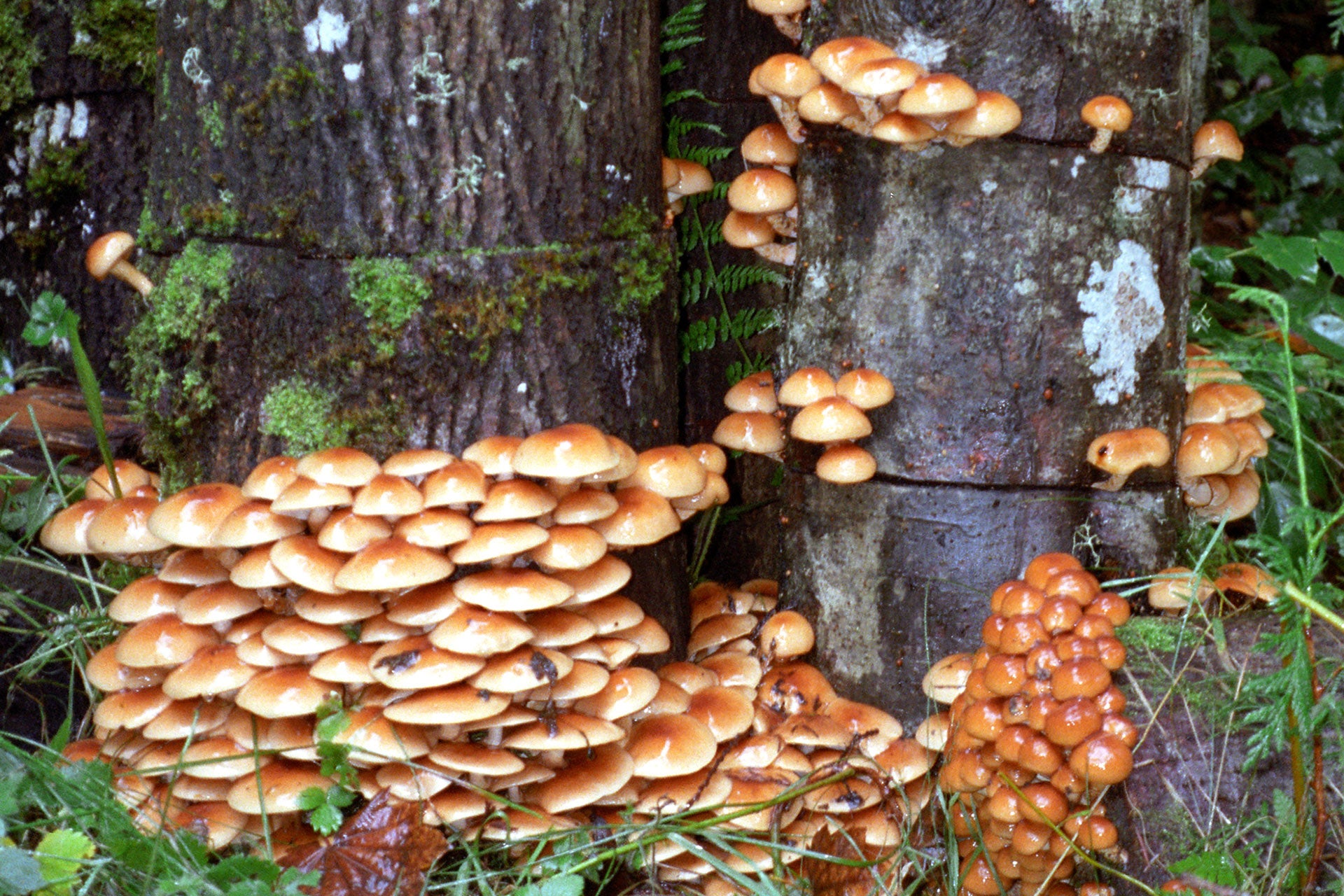
Maximizing Your "Mycelial Mileage"

After they have finished producing indoors, many of our indoor Mushroom Patches™ can be brought "back to life" through outdoor cultivation. When your Shiitake, Reishi or Oyster Mushroom Patch™ has run itself out indoors, the material that makes up the Patch (called "spawn") can be broken up and used to inoculate hardwood logs. Non-aromatic hardwoods such as oak, poplar (cottonwood), elm, maple and similar woods are very good candidates for log cultivation. Alder is a good wood for the cultivation of Oyster and Shiitake mushrooms, but must be kept above ground because it will decompose quickly in contact with the soil. (We do not recommend using aromatic woods such as cedar or eucalyptus.) Thick-barked woods are preferable over "paper-bark" woods such as birch, and any log that is shedding it's bark should not be used. Logs should be cut one to three months in advance of inoculation. Cutting your logs in the late Winter or early Spring helps to insure that they have a high sugar content, although this is not strictly necessary. Freshly-cut logs should not be immediately inoculated; trees naturally produce anti-fungal compounds, which degrade in two to three weeks from cutting. Aged deadwood is also not recommended for inoculation, as it has a poor nutrient base for supporting mushroom growth. Logs or stumps with fine cracks (called "checks") running through them are more quickly colonized with mushroom mycelium than those without.

The spawn can be packed into the cut face of firewood logs. Loggers call these "rounds". Another "round" of slightly smaller diameter is sandwiched on top. As each round is added, it resembles a telescoping "Tootsie-roll". These are best located outside, in a shady and naturally moist location. Placing them in the garden, on the north side of corn, grape, pole beans, or similar towering shade-providing plants will preserve moisture. After about two months, heavily watering the stacked rounds will stimulate mushroom production. We recommend using a hardwood—ideally oak, alder, cottonwood (poplar), aspen, elm, beech, or similar woods. Avoid fruit trees—they are too dense and tough.
You can also inoculate logs using the "wedge technique", in which wedges are cut from the log and the crevices packed with mushroom spawn. The wedges are then replaced in the log and secured with nails, screws or straps. With some consideration, exotic mycological landscapes can be created using artfully arranged logs!
Logs inoculated with Shiitake or Oyster mushroom spawn can be placed either horizontally on pallets or cinder blocks, or placed vertically with one end buried in the ground to help draw moisture from the soil up into the log . Logs inoculated with Reishi mushroom spawn need to be buried horizontally in the ground to a depth of about two-thirds of their diameter. Burying them in hardwood sawdust rather than soil will provide the necessary moisture buffer while helping to slow the decay of the wood by organisms in the soil. It will take anywhere from six months to two years for the mycelium to fully colonize the logs, after which they will be ready to fruit. You can check the progress of the colonization by looking for whitish, fuzzy growth in cracks in the bark, around the sites of inoculation and on the cut ends of the logs.

You can let your logs fruit on their own, or you can "initiate" them by turning a sprinkler on them for 24 hours. Afterwards, water the logs 2-3 times a day, depending on the weather in your area. Stumps and partially buried logs should be watered 2-3 times a week or more, depending on weather conditions. Mushrooms should begin to form within 2 weeks of initiation. Mushrooms will often form at the sites of inoculation, though they will also grow wherever cracks or holes appear in the bark. Mushrooms can be harvested approximately 2 weeks after they first appear, although natural factors such as temperature and humidity might affect growing time. Note: never eat a mushroom unless you are sure of its identification.
After you have harvested your first flush, your logs will usually lapse into a period of dormancy. If they do not fruit again immediately after the first flush, let them sit for 2-3 weeks before re-initiating them. Stumps will often fruit continuously during the rainy season, with no dormancy. Logs may remain dormant for as long as 8 weeks, depending on a number of variables. After the dormancy period, re-initiate the logs by soaking or watering them for 24 hours.
This cycle of growth and dormancy should continue throughout the warmer months, giving you a total of 4-6 flushes per year. Please note, however, that due to the many and various contributing factors found in Nature—among them climate, species, sugar and moisture content of wood, quality of care and just plain old chance—we cannot accurately predict the amount of mushrooms you will get from your logs.
